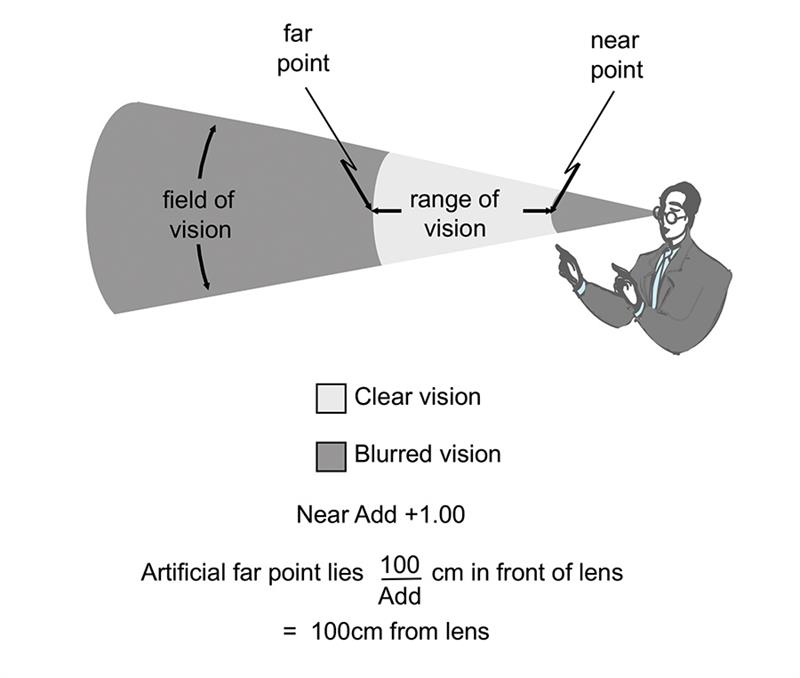So far, this series has concentrated on progressive lenses offering vision correction from distance to near. This article will consider modern lens designs targeting correction where the visual demands are more centred around intermediate and near work.
Degressive power lenses
When an emmetrope wears a pair of +1.00 D lenses, the effect is to render the wearer 1.00 D myopic, with an artificial far point at 100cm in front of the lens (figure 1). Objects which lie further than 100cm from the lens appear blurred, and images take on the typical characteristics of pincushion distortion.

Figure 1: Range of vision through near vision spectacles
Register now to continue reading
Thank you for visiting Optician Online. Register now to access up to 10 news and opinion articles a month.
Register
Already have an account? Sign in here
